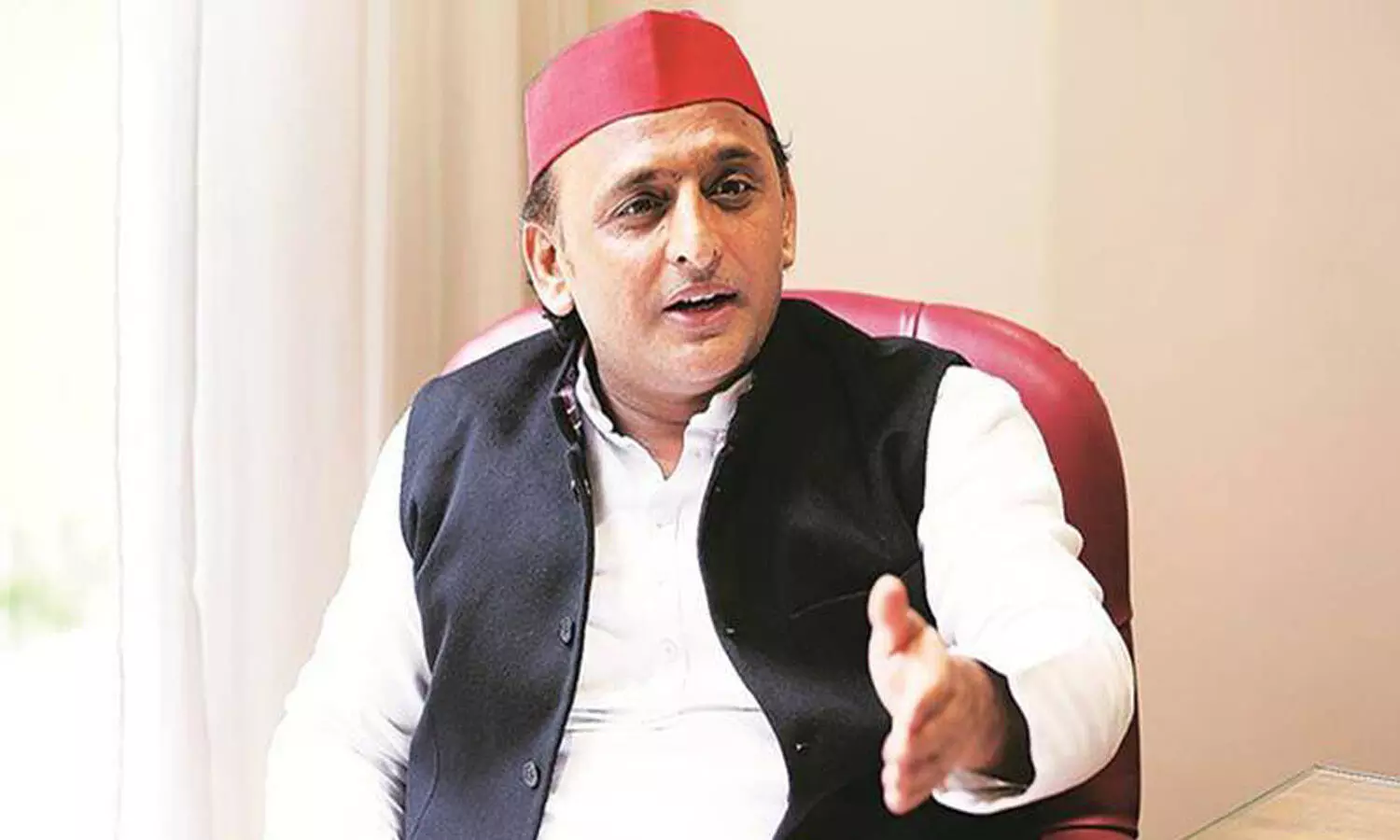TRENDING TAGS :
Why did Akhilesh Yadav choose the Karhal seat for election?
Samajwadi Party chief Akhilesh Yadav declared his intention to run for the Karhal assembly seat in the Mainpuri district.
Akhilesh Yadav (Social Media)
Political groups in Uttar Pradesh are gearing up for next month's assembly elections. The majority of the parties have begun to announce their candidates. In this episode, Samajwadi Party chief Akhilesh Yadav declared his intention to run for the Karhal assembly seat in the Mainpuri district. The third round of voting will take place on February 20. We bring you the complete information and history of this seat.
SP chairman Akhilesh Yadav said on Thursday that he will run for the Karhal seat. This will be his first election to the legislature. He was the Lok Sabha MP from Kannauj before he became Chief Minister in 2012. Later, he was elected to the Legislative Council and served as Chief Minister for five years. His choice to run for the Karhal seat in the assembly elections for the first time has sparked much debate. People feel that this seat is an SP stronghold.
Why did Akhilesh choose to run for the Karhal seat?
The SP has held this seat since 1993. However, incumbent SP MLA Sobran Singh was elected on a BJP ticket in 2002 but afterward switched to the SP. Since then, he has had ownership of the seat. Sobaran Singh had promised Akhilesh the seat in order for him to win his maiden assembly elections. He had said that if he received a record number of votes, he would send Akhilesh from here.
Mulayam Singh, the founder of the SP, has a strong relationship with Karhal.
Mulayam Singh Yadav, the founder of the SP, is also close to Karhal. He had studied at the Jain Inter College here and had also worked as a teacher for a while. He has long served as the Lok Sabha's representative for this seat.
In the 1956 delimitation, Karhal became the assembly seat.
The Karhal assembly seat was established after the 1956 delimitation. Natthu Singh Yadav of the Praja Socialist Party became the first MLA in 1957. Swatantra Party was elected in 1962, 1967, and 1969, Nathu Singh on a Bharatiya Kranti Dal ticket in 1974, Janata Party in 1977, and Shivmangal Singh of the Congress in 1980. Following it, because of caste breeze, Baburam Yadav won the election from this seat from 1985 to 1996.
SP has held the Karhal seat since 1993.
Baburam Yadav had won three elections on a Janata Dal ticket before joining SP in 1993. He was an MLA twice since then but lost to BJP's Sobran Singh in 2002. However, after some time, Sobran Singh joined the SP and has been winning ever since. Even after the BJP wave of 2017, the SP candidate received a large number of votes.
What is the caste equation?
When it comes to the caste equation in the Karhal assembly, there are a total of 3,71,241 voters. There are 2,01,394 men, 1,69,851 women, and 16 people from other categories among them. The Yadav group accounts for 40% of all voters. Similarly, 17% of voters are from the Scheduled Castes (SC), 13% are Shakyas, 9% are Thakurs, 7% are Brahmins, 6% are minorities, and 8% are from other castes and tribes. In such a case, Yadav voters make the final choice in this seat.
According to the SP's internal assessment, the Karhal seat is likewise safe.
The SP had also held an internal poll to determine Akhilesh Yadav's safe seat. Karhal has been deemed to be safer than other Yadav-dominated seats such as Gopalpur and Gunnaur. In such a case, the party has designated this seat for him.
Soberan Singh Yadav of the SP won Karhal by 38,405 votes in the 2017 assembly elections. Soberan Singh received 49.57 percent of the total votes cast at the time or 10,421 votes. Similarly, Ram Shakya of the BJP received 31.31 percent of the vote or 65,816 votes, while Dalveer Singh of the BSP received 14.12 percent of the vote or 29,676 votes. In such a case, Yadav voters are thought to be in the majority.
When will the Uttar Pradesh assembly elections be held?
Elections in Uttar Pradesh will be conducted in seven parts, according to the Election Commission's timetable. Voting will take place on the following dates: February 10, February 14, February 20, February 23, February 27, March 3, and March 7. Following that, the counting of ballots for Uttar Pradesh and four other states will take place on March 10, with the results being announced on the same day. Several major parties, including the BJP, Congress, SP, and BSP, are running in the state.
The SP gained just 47 seats in the 2017 elections.
Uttar Pradesh has 403 assembly seats in total. In 2017, the BJP and its allies won 324 seats and became the state government. The Samajwadi Party and the Congress jointly fought the elections and won 54 seats. The SP had won 47 seats, while the Congress had won seven. Simultaneously, the Bahujan Samaj Party gained 19 seats. Following the elections, Yogi Adityanath was elected as the Chief Minister of Uttar Pradesh.



